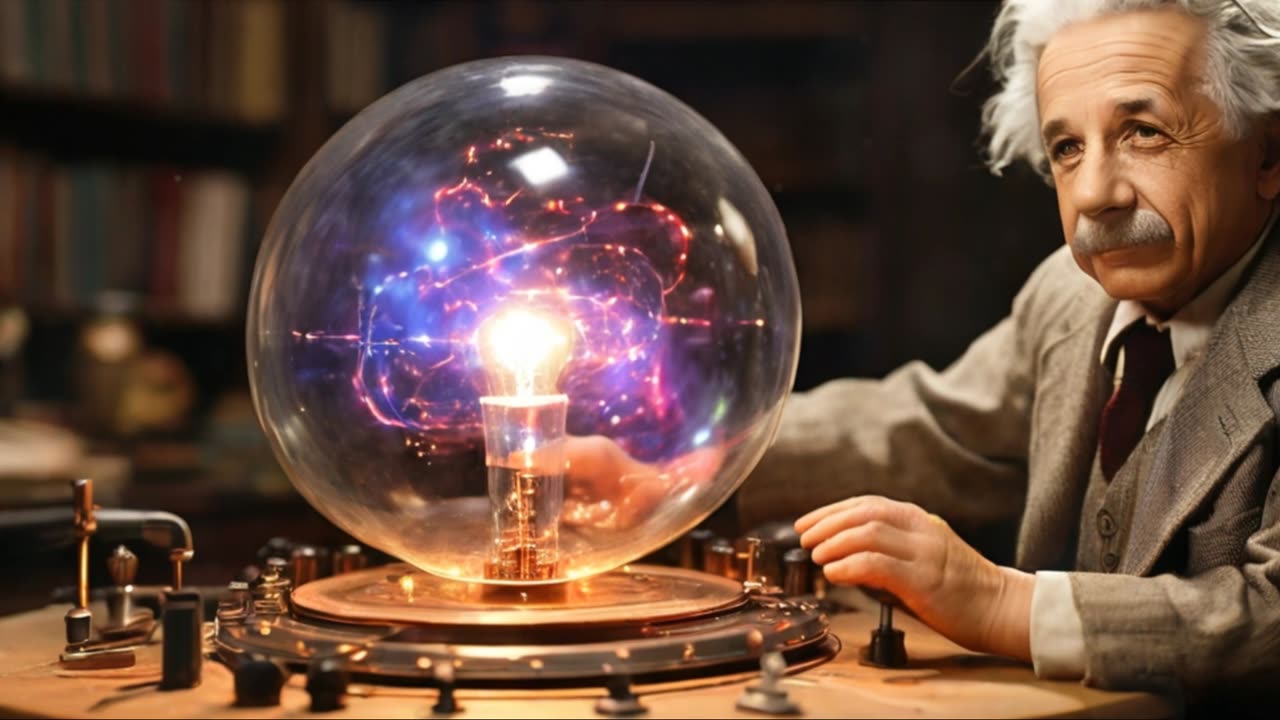Premium Only Content

Albert Einstein - The Man Behind Relativity Theory (1879 - 1955)
Albert Einstein (1879-1955) was a theoretical physicist renowned for his contributions to the development of modern physics, most notably the theory of relativity. Here is an exploration of Einstein's life and his groundbreaking work on the theory of relativity:
Early Life and Education:
Birth and Childhood:
Albert Einstein was born on March 14, 1879, in Ulm, in the Kingdom of Württemberg in the German Empire.
Education and Academic Struggles:
Einstein showed an early interest in mathematics and physics but faced challenges in the traditional school system. He later attended the Swiss Federal Institute of Technology (ETH Zurich).
Career and Scientific Contributions:
Annus Mirabilis Papers (1905):
In 1905, often referred to as Einstein's Annus Mirabilis (Year of Miracles), he published four groundbreaking papers that transformed physics. These papers covered the photoelectric effect, Brownian motion, special relativity, and mass-energy equivalence (E=mc²).
Special Theory of Relativity (1905):
Einstein's special theory of relativity introduced the revolutionary concept that time and space are intertwined and relative to the observer's motion.
General Theory of Relativity (1915):
Einstein extended his theory with the development of the general theory of relativity, proposing that gravity is not a force but a curvature of spacetime caused by mass and energy.
Einstein's Equation (Field Equations):
The general theory of relativity is encapsulated in Einstein's field equations, a set of ten interrelated differential equations.
Public Recognition and Nobel Prize:
Nobel Prize in Physics (1921):
Einstein was awarded the Nobel Prize in Physics in 1921 for his explanation of the photoelectric effect, a key aspect of quantum theory.
Einstein's Public Persona:
Einstein's iconic image became widely recognized, and he used his platform to advocate for pacifism, civil rights, and education.
Later Life and Exile:
Emigration to the United States:
Due to the rise of the Nazi regime in Germany, Einstein, who was of Jewish heritage, emigrated to the United States in 1933.
Atomic Bomb Letter (1939):
Einstein played a role in alerting the U.S. government to the potential development of atomic weapons by Nazi Germany, leading to the establishment of the Manhattan Project.
Legacy and Later Work:
Post-War Years:
After World War II, Einstein continued his scientific pursuits, working on unified field theory, although he did not achieve the breakthrough he sought.
Death and Immortality of Ideas:
Albert Einstein died on April 18, 1955, in Princeton, New Jersey. His ideas, particularly those related to relativity, continue to shape modern physics and have had profound implications for our understanding of the universe.
Cultural Impact:
Pop Culture Icon:
Einstein's disheveled appearance, unique fashion sense, and iconic equations have made him a symbol of genius in popular culture.
E=mc²:
Einstein's equation, E=mc², has become one of the most recognizable symbols in physics, representing the equivalence of energy (E) and mass (m) multiplied by the speed of light (c) squared.
Albert Einstein's contributions to physics, particularly his theories of relativity, revolutionized our understanding of the fundamental nature of space, time, and gravity. Beyond his scientific achievements, Einstein's advocacy for human rights and his status as a cultural icon have left an indelible mark on history.
-
 18:29
18:29
Bearing
22 hours agoCrazy Democrat Lady Thinks THE DRONES Are Coming For TRUMP & MAGA
2.14K39 -
 53:41
53:41
PMG
1 day ago"CNN Caught Issuing FAKE Report-Ashley Hayek"
7541 -
 57:22
57:22
barstoolsports
16 hours agoHardest Puzzle Breaks Brains | Surviving Barstool S4 Ep. 8
230K10 -
 9:02:15
9:02:15
Dr Disrespect
19 hours ago🔴LIVE - DR DISRESPECT - MARVEL RIVALS - RANKED
374K61 -
 1:00:46
1:00:46
The StoneZONE with Roger Stone
11 hours agoFake News Attack on Tulsi Gabbard! | The StoneZONE w/ Roger Stone
64.9K22 -
 2:24:08
2:24:08
WeAreChange
14 hours agoElon Musk & Donald Trump: The Emergency Halt That Saved Us
89.7K61 -
 1:13:11
1:13:11
Flyover Conservatives
1 day agoWARNING! Is Bitcoin CIA-Controlled? – The Shocking Reality of Digital Assets - Clay Clark | FOC Show
40.8K11 -
 2:00:37
2:00:37
Space Ice
16 hours agoSpace Ice & Redeye Try To Figure Out Seagal's Most Incoherent Movie
161K7 -
 1:00:36
1:00:36
PMG
1 day ago $14.62 earned"Santa Trump is Giving Us Hope - But Will Johnson Stand Strong?"
116K14 -
 54:30
54:30
LFA TV
1 day agoThe German Strongman’s Arrival Is Imminent | Trumpet Daily 12.18.24 7PM EST
85.6K7